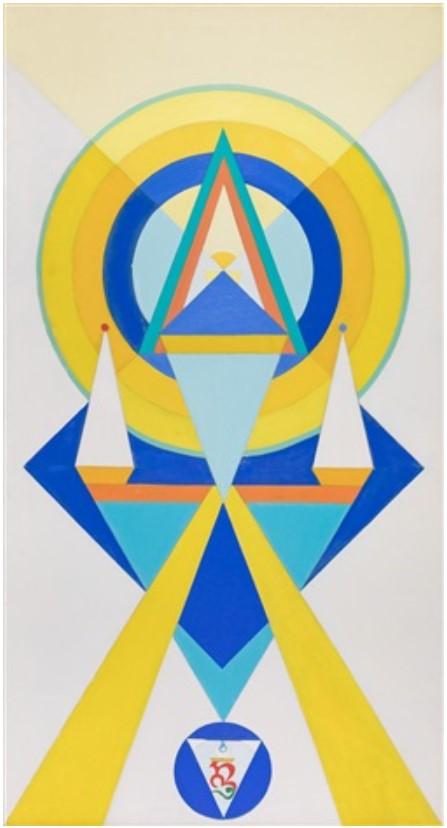A new special exhibition of works by American painter, journalist, writer, collector and art critic Charmion von Wiegand (1896-1983) has been presented at the Kunstmuseum Basel, Switzerland. The works draw from a number of influences, including von Wiegand's life as a practicing Tibetan Buddhist. Her work incorporates bold shapes and colors that sometimes form large abstract images and at other times clearly reflect themes common to Tibetan Buddhism.
For Haema Sivanesan, chief curator of the Glenbow Museum in Calgary, Canada, von Wiegand is "perhaps one of the first American artists to produce an image of 'modern Buddhism', that is, an image of Buddhism as a cross-cultural phenomenon constituted by the encounter between East and West. (Artistic)
Von Wiegand's career as a painter began late in her life after a visit to her psychotherapist, who asked her what she would like to do if there was anything she could do. She replied then, in 1927 at the age of 30, “Why, paint of course. (Artistic)
Over the next decade von Wiegand worked on his painting and art criticism, writing for journals such as New Masses et artistic facade. Maja Wismer, head of art after 1960 and contemporary art at the Kunstmuseum Basel, described the period as one of “trials and tests of how she could see the world. Sometimes she tried to find words, sometimes she tried to find figuration. (Artistic)
Von Wiegand's early work was figurative in nature as she believed this was the best way to harmonize with her left-wing social values. In 1941, she met Piet Cornelis Mondriaan (1872-1944), through whom she would develop an appreciation for abstract art.
"I think it opened the door for her to see a light at the end of the tunnel where abstraction could make sense," Wismer said. (Artistic)
As von Wiegand continued her progress as a painter, she also became interested in East Asian art and Buddhist practice. These influences combined with his growing mastery of contemporary abstract art to form a new style that is truly one of a kind.
"The moment she really blossomed was when she was able to connect her spiritual way of life with her painting, when it wasn't about reading someone else's work. other but really to live spirituality. That, I think, is unique,” Wismer said. (Artistic)
Write for The New York Times in 2010, arts journalist, editor, and critic Karen Rosenberg wrote that in the 1960s, "while studying with Tibetan guru Khyongla Rato, she began to incorporate mandalas, chakras, and 'other Buddhist symbols in his abstract compositions'. (The New York Times)


A work showing the new fusion is Climbing Mount Meru (1962). Felix Vogel, professor of art history at the University of Kassel, points out in the exhibition catalog that the work is "bound by a traditional Tibetan style of representation in which to show one object at a time top and sideways is completely normal”. (Artistic)
Another piece, titled To Buddha Adi (circa 1968-1970), depicts a Buddhist altar. Sivanesan notes that "the predominance of dramatic yellow and white suggests the luminous and uplifting qualities of Buddhist practice, distilling the experience of Buddhism into an ambitious vision of visualization." (Artistic)
The exhibition, which promises to be useful to both practicing Buddhists and art lovers, opened on March 25 and will end on August 13.
See more
Charmion von Wiegand (Kunstmuseum Basel)
Charmion von Wiegand's Buddhist-inspired abstractions have long been acclaimed (Artsy)
The rich, detailed fullness found in Empty (The New York Times)
